
Time to revisit another old recipe. I originally posted this one in May 2020.
The wikipedia page for this dish now mentions a “popular regional variation”, tavče gravče Tetovo style. I was going to research and make a separate recipe for that variation, but (probably unsurprisingly, since that mention on Wikipedia is flagged as needing citation) I can’t seem to find much about it online, only one or two recipes that specifically call out Tetovo. From what I can gather it seems that the most highly regarded beans to use in the dish are tetovac beans, from the city of Tetovo. They are apparently a large flat bean. Large butter or lima beans would be the closest approximation in this country. I actually just used cannellini beans this time around.
In my original post I used the term gravče na tavče in once place. This is an alternate name that shows up fairly frequently when you search recipes for this dish, but in my research today I discovered that it is grammatically incorrect, and would translate as something along the lines of “pan into beans” rather than “beans from a pan”.
Three years later and there still doesn’t seem to be a source for dried Macedonian chilies on line, just lots of sources for seeds, so once again I just used my unlabelled Mexican chilies. I did chop it up before putting it on top of the dish, making it more pleasant to eat and easier to divide between servings.
Read on below for my original post and recipe.

Tavče gravče (Macedonian: Тавче гравче) is a traditional Macedonian dish. It is prepared with fresh beans and can be found in many restaurants in North Macedonia. It is also commonly eaten by the Macedonian diaspora. This meal is baked and served in a traditional unglazed earthenware pot. The name of the dish may be translated as “Beans on a tava“. Tavče gravče is considered the national dish of North Macedonia.
https://en.wikipedia.org/wiki/Tavče_gravče
Tavče gravče is the Macedonian version of prebranac. At it’s most basic there’s not much difference between them. They are both baked bean dishes from the Balkan peninsula, so it’s not surprising that they probably have the same basic recipe. However in my research, prebranac recipes were pretty consistent at beans, onions, oil, paprika. Tavče gravče on the other hand seemed to have a lot more variation. The most obvious differences are the addition of fresh peppers, and that everything is cooked together with the beans, rather than seperately (well, mostly).
Tavče gravče translates roughly to “skillet beans”. Beans are “grah”, and a tava is type of griddle or frying pan. That said, every recipe I saw called for baking them in a clay dish. (Also, several of the blogs I looked at commented on the this very same discrepancy). I guess maybe somewhere along the lines the dish was more like refried beans, but baking seems to have become the normal way to do it.
This dish is traditionally vegan. Most Macedonians are Orthodox and don’t eat meat on Fridays, so this dish is served for lunch on that day every week. That said, I encountered quite a few recipes that included meat of one sort or another, so I decided that since I kept prebranac vegan I’d include some meat in this one. I used beef in this batch, which was ok but maybe didn’t really add anything. I list sausages as an optional ingredient; if you choose to use them, keep them whole and arrange them on top of the dish like the onion rings and peppers.
My impression is that the peppers they would be used in Macedonia are probably more along the lines of Italian sweet peppers (the pointy “bulls horn” type) than the bell peppers common here in the USA. I wasn’t going to find such things in Duluth in May, so I just grabbed some small bell peppers and called it good enough.
The dried chili commonly used in Macedonia appears to be this one, but I couldn’t find anything but seeds, even on Amazon. The pepper I used has been in my cupboard for a while, and I’ve lost the label so I’m not actually sure what variety it was, but given the peppers I usually buy Anaheim seems most likely. Any larger mild to medium chili would probably work. Videos I watched showed them scooping whole peppers onto the plate along with the beans. Having tried that, I’ll say that while leaving it whole is fun for presentation, that’s not the best way to eat them.
Edit 8/2/20: I made this again, and chopped the dried chili into bite sized pieces before putting it on top of the dish. It definitely made it easier to eat and spread the pepper between every serving.
Vegeta seasoning is a brand of seasoned salt that seems to be quite popular in the Balkans. It’s available in several different formulas and sizes from Amazon*.
Mint is an ingredient that I only saw in a couple recipes, but I liked the flavor it added in bob chorba, so I included it here. I couldn’t tell from the recipes whether they were using fresh or dried. I bought fresh while I was at the store, but when it came time to add it, I decided that with something that was going to continue to cook for another hour, dried made more sense.
The roux I made for this has much more oil vs flour than traditional roux. I don’t actually understand the chemistry well enough to know how changing the flour/fat ratio affects the thickening power, but I do know that I thought the sauce in this dish was a good consistency.
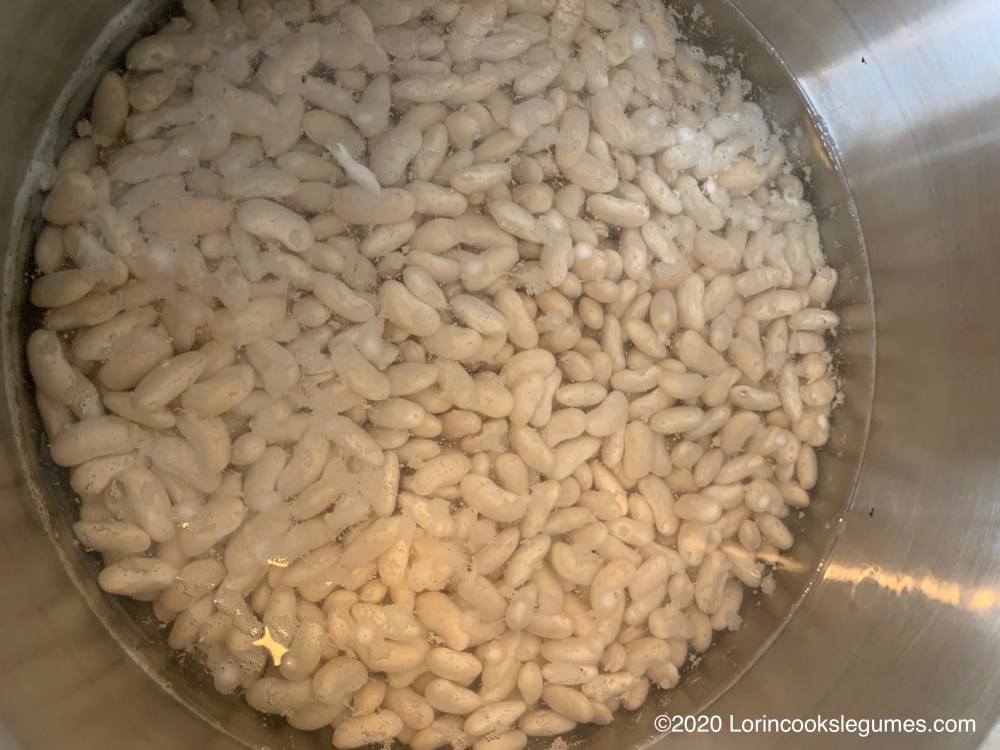
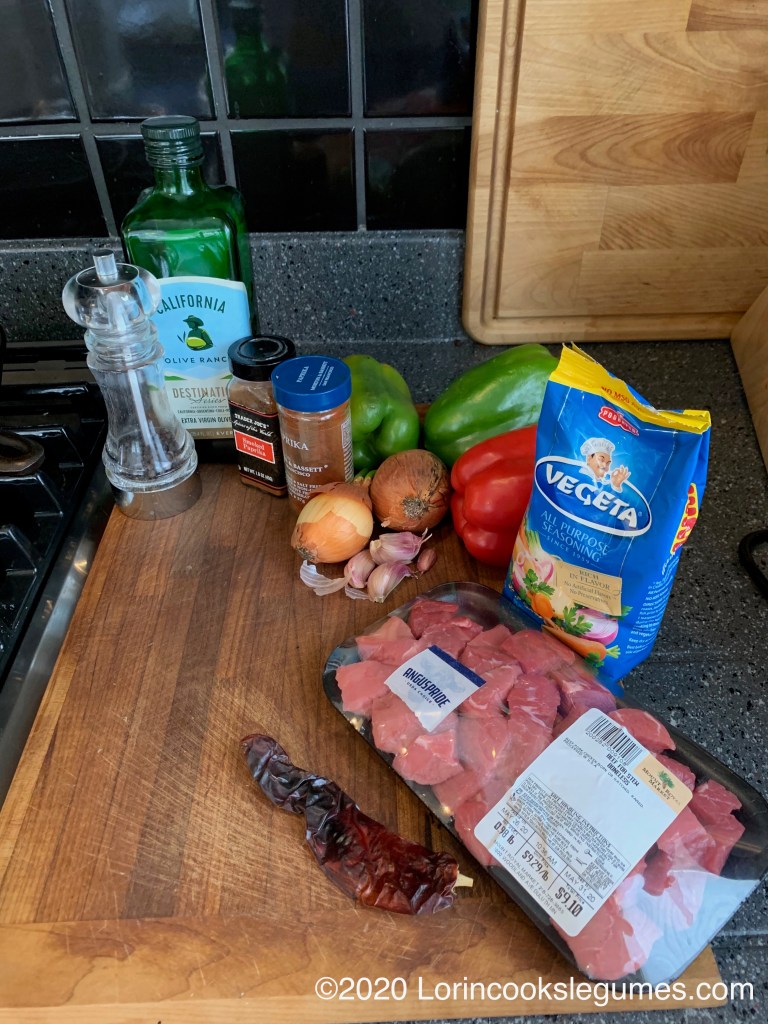



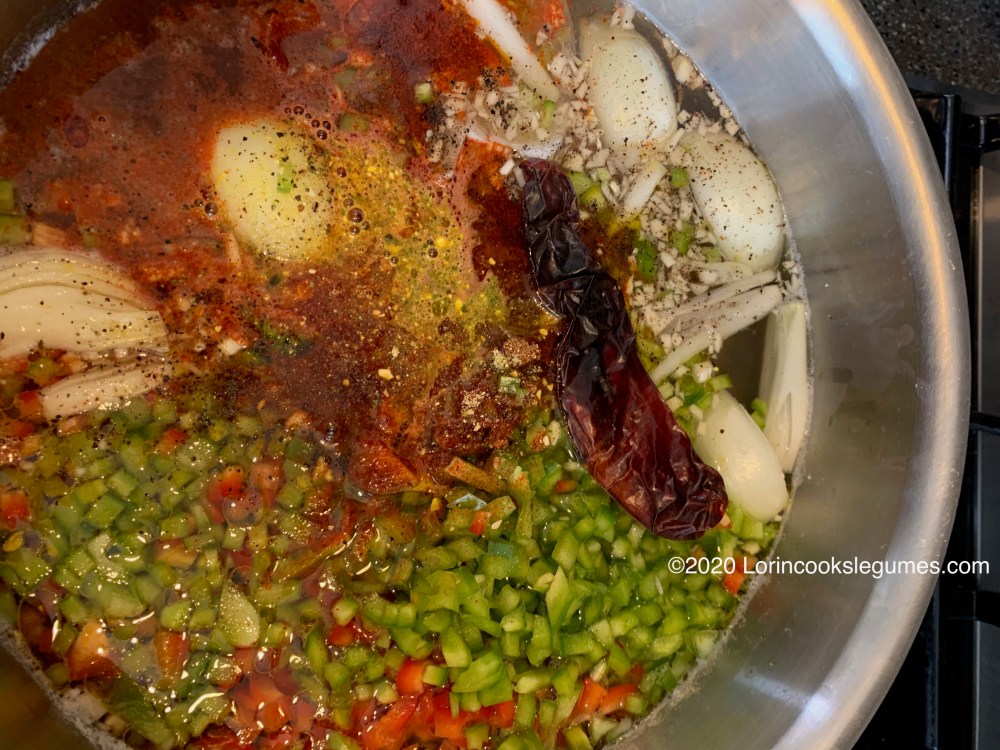



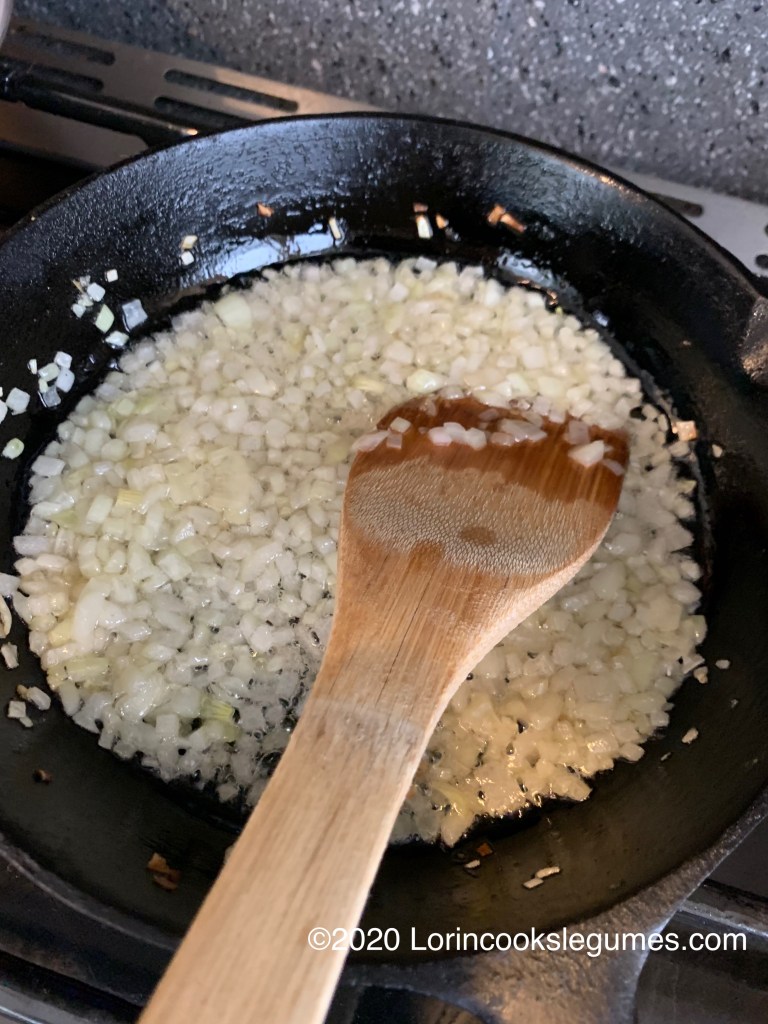
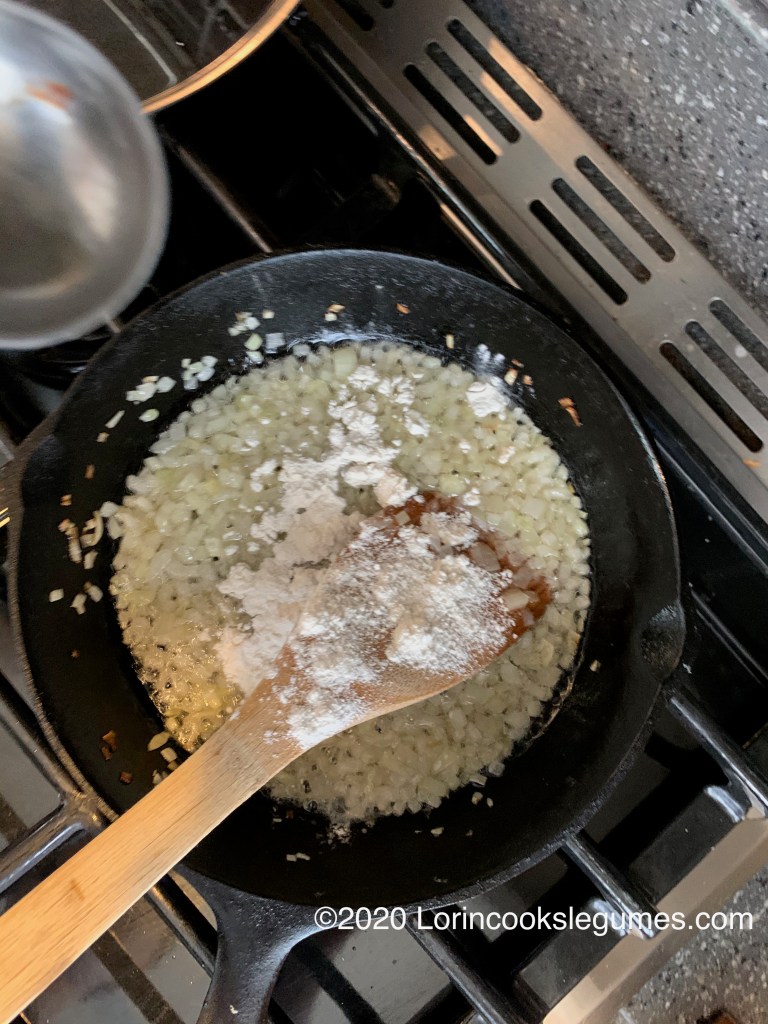


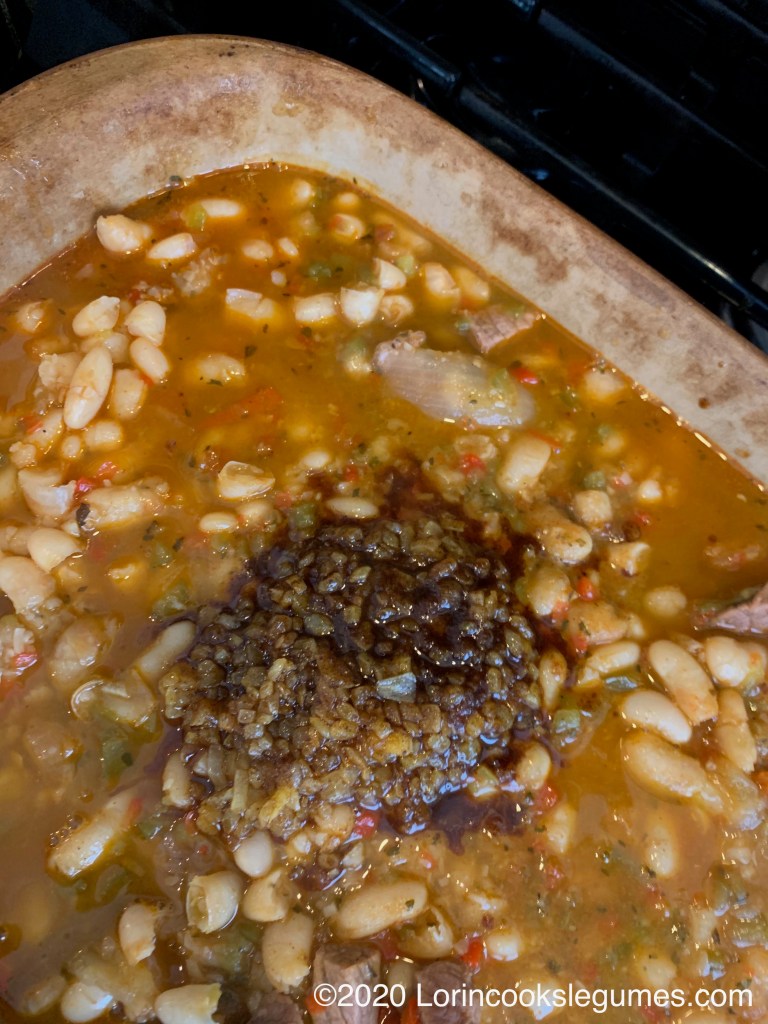

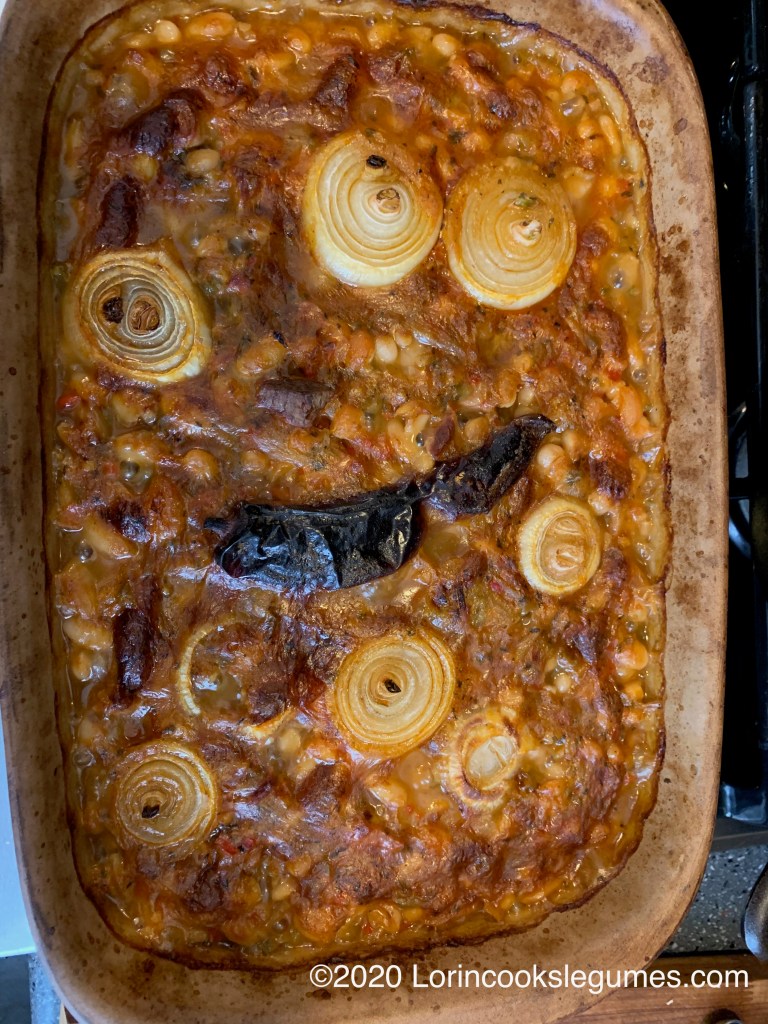

Tavče Gravče
Serves: 4-6
Prep: 40 minutes
Cook:3 ½- 4 hours
Total 4 hours, plus soaking time
(As an Amazon Associate I earn from qualifying purchases.)
1 lb. white beans
Water to cover beans by 2 inches
1 large yellow onion, quartered
4 cloves garlic, minced
1 lb. beef, diced
2 Tablespoons olive oil
2 green peppers, finely diced
1 red pepper, finely diced
Black pepper, to taste
1 Tablespoon paprika
⅓ teaspoon smoked paprika
1 teaspoon Vegeta seasoning
1 whole dried chili pepper
½ teaspoon salt
¾ Tablespoon mint
3-4 Tablespoons canola or sunflower oil
½ large yellow onion, finely diced
1 Tablespoon flour
1 Tablespoon paprika
½ large yellow onion, cut in rings.
¾ Tablespoon parsley, minced.
Optional:
32 oz. canned kidney beans, in place of white beans
1 Tablespoons seasoned salt
1 lb. red beans, in place of white
¼ teaspoon hot pepper
3 Tablespoon tomato paste
4 sausages
1 tomato
1 bay leaf
1 green chili pepper
7 oz. cherry tomatoes
14 oz. chorizo
430 g butter beans in place of white beans.
Fresh marjoram for garnish
Soak beans overnight. Drain, cover with fresh water and bring to a boil. Cook for 5 minutes, drain and add fresh water again, to cover by about 2 inches. Add quartered onion, garlic, beef, olive oil, diced peppers, and seasonings. Bring to a boil, reduce heat to a simmer and cook uncovered for 1 ½ -2 hours, until beans are tender. When cooked the mixture should have a stew-like consistency. If it starts to dry out too much add some additional water.
When beans are tender, add salt and mint. Continue to simmer beans while you make the roux.
Preheat Oven to 400F.
Heat oil in a small sauce pan. Saute diced onion until soft. Add flour and cook for about 2 minutes, stirring constantly. Add paprika and mix well.
Remove dried chili from bean mixture and set aside. Transfer bean mixture to a casserole dish. There should be enough liquid to just cover the beans- if too wet, don’t use all the water. Stir in the roux and check the seasoning, adjusting if necessary. Arrange sliced onion rings and chili pepper on top. Bake for about 50 minutes, until nicely browned on top.
Allow to cool for 15 minutes. Garnish with parsley. Serve with crusty bread and a salad with feta or sheep cheese.
*As an Amazon Associate I earn from qualifying Amazon purchases.
I receive no compensation for mentioning any other websites or product.